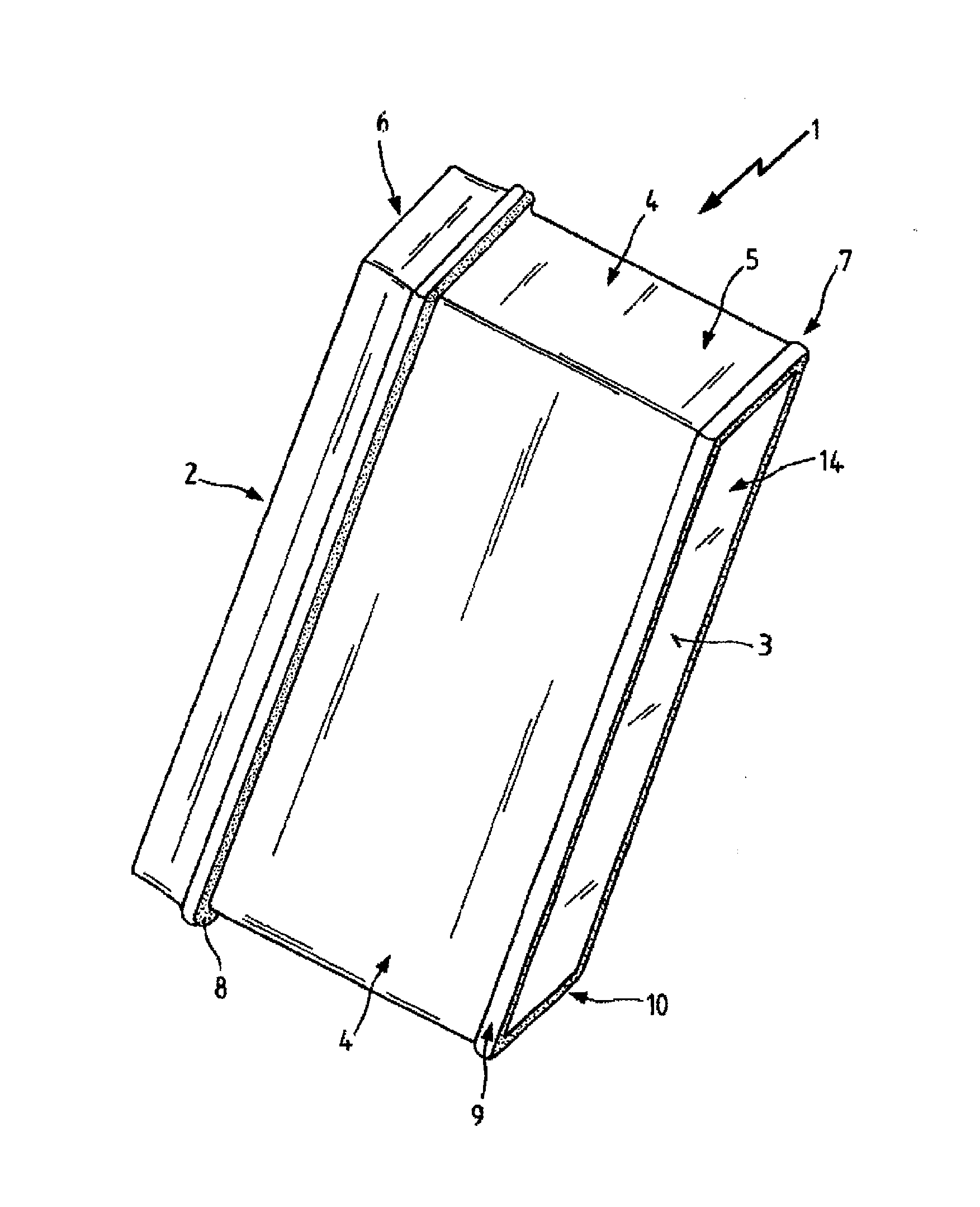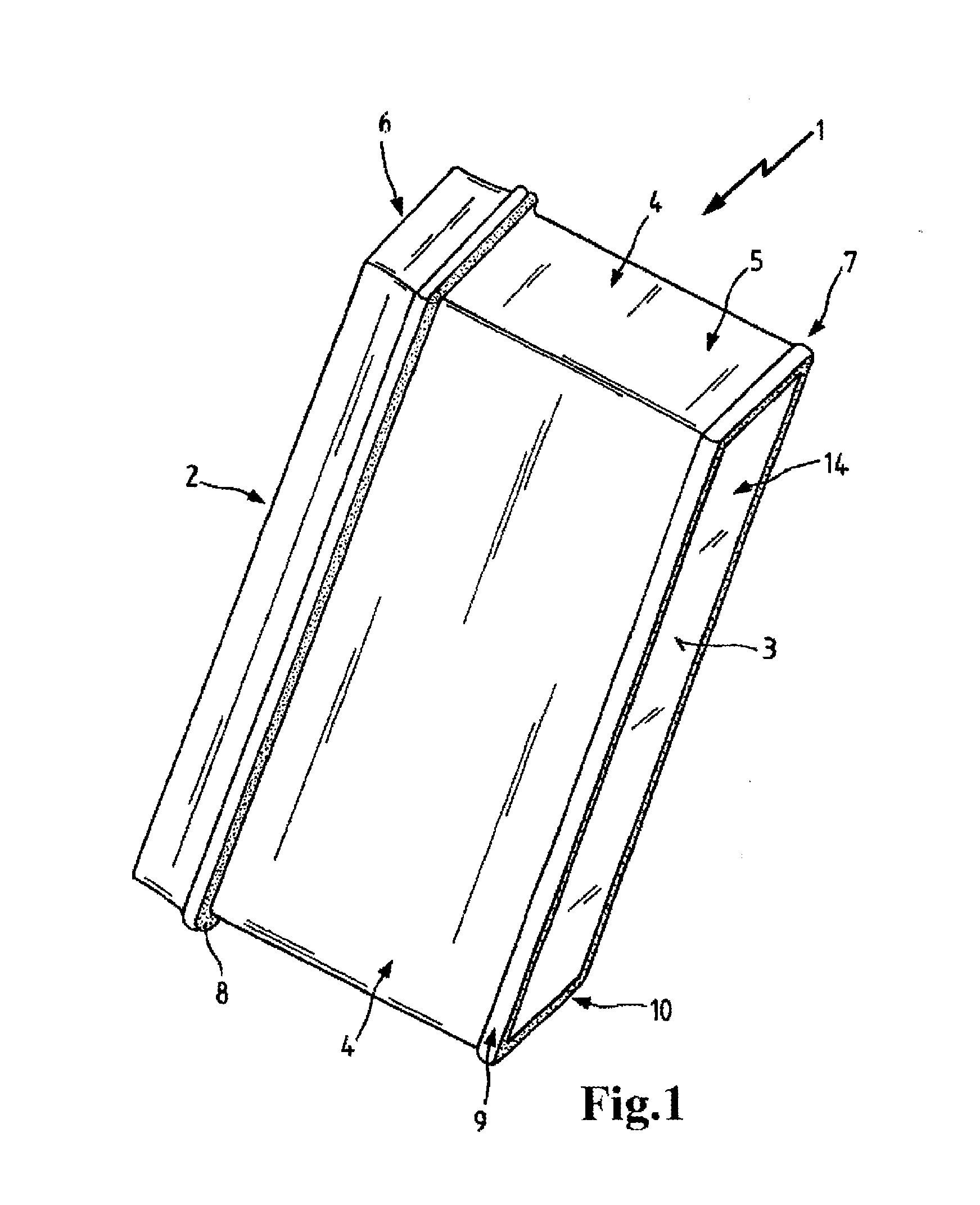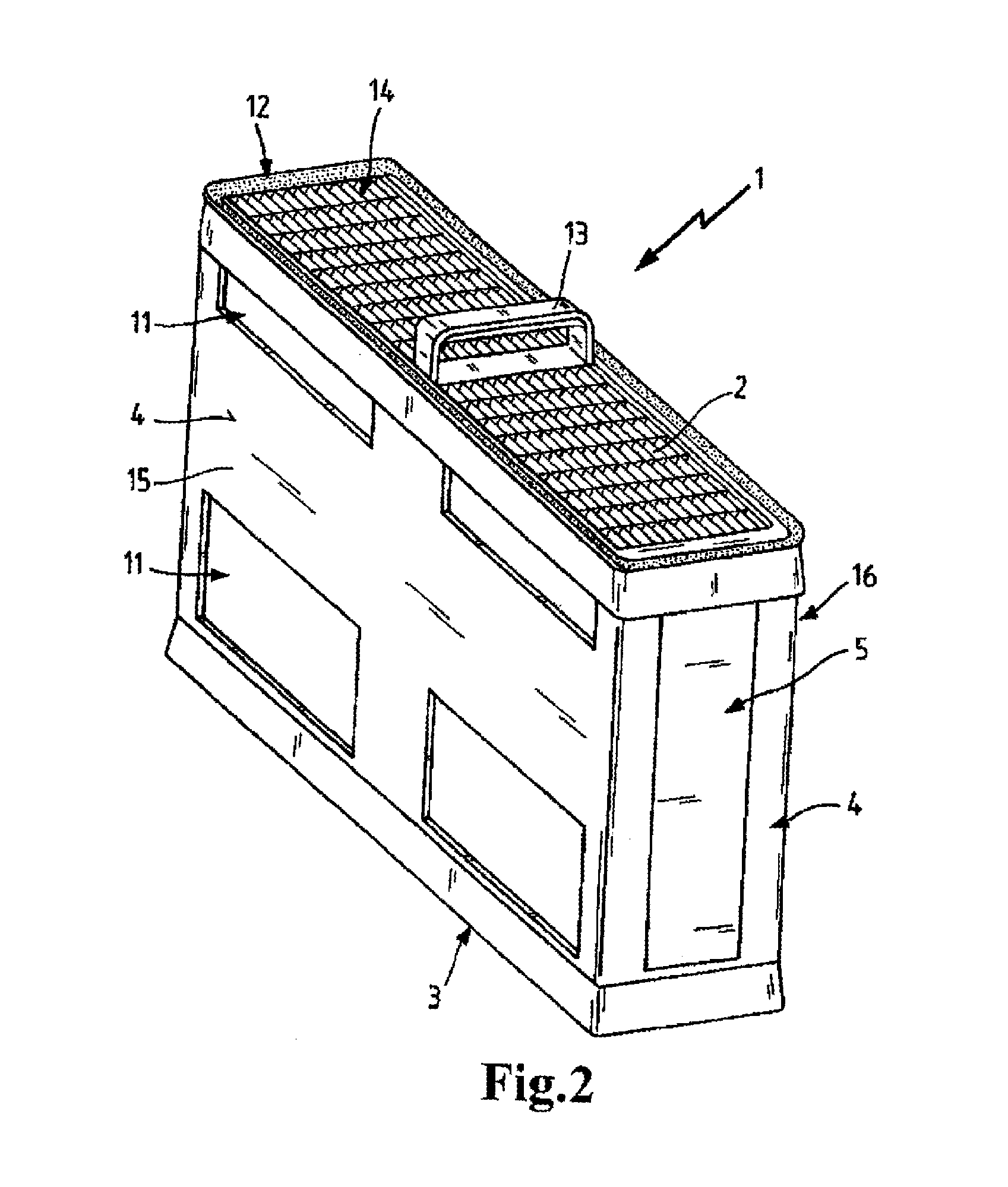Filter Element and Method for Producing a Filter Element
- Summary
- Abstract
- Description
- Claims
- Application Information
AI Technical Summary
Benefits of technology
Problems solved by technology
Method used
Image
Examples
example 1
[0176]A polyester hot melt (Sika SikaMelt 9120) with a density of 1.25 g / cm3 and an elongation at break in the range of 75-115% and a polyamide hot melt (Henkel Marcomet 6208) with a density of 0.98 g / cm3 are each separately heated with mixing to processing temperature (200° C.). The stringing tendency is determined qualitatively such that a 1 mm thick round metal rod is immersed into the melt and is pulled out suddenly. In example 1, for both hot melts a hot melt drop remains on the round metal rod, on which, directly after pulling out from the melt, a hot melt string forms thereat that cools and hardens. A residual hardened string is detectable. The stringing tendency is therefore evaluated as high. Moreover, the granular material of the two aforementioned hot melts is mixed and the mixed granular material is heated to 200° and melted together. Immediately thereafter, in order to keep separation at minimum, an application by means of an applicator nozzle which is coupled directly ...
example 2
[0177]In same weight proportions, a polyester hot melt with a melting point of 150-160° C., substantially formed of 40% by weight butanediol, 33% by weight terephthalic acid, 27% by weight adipic acid, and a polyamide hot melt with a melting point of 130° C., formed of 67% by weight ε-caprolactam, 5% by weight 2,2,4-trimethylhexamethylene diamine, 12% by weight of 1-amino-3-aminomethyl-3,5,5-trimethyl cyclohexane, and 16% by weight adipic acid are mixed in granular form and together melted with dynamic mixing. The stringing tendency is determined qualitatively such that a round metal rod of 1 mm thickness is immersed into the melt and suddenly pulled out. In example 2, a hot melt drop remains on the round metal rod into which, directly after pulling out the round metal rod, the string formed of the melt retracts. A residual string cannot be seen. The stringing tendency is therefore evaluated as minimal.
example 3
[0178]The polyester hot melt (Sika Sikamelt 9420) with an elongation at break of approximately 50-60% is mixed in weight proportions 60:40, 65:35, 70:30 (the polyester hot melt mentioned first, respectively) with a polyamide hot melt (Henkel Macromet 6208) with a melting temperature between 188 and 195° and a density of 1.02 g / cm3 as in example 1 and tested with regard to stringing tendency.
[0179]In example 3, a hot melt drop remains on the round metal rod into which the string formed directly after pulling out the round metal rod from the melt retracts completely or partially, depending on the mixing ratio. The effect is in this context significantly less pronounced than in the application of the two hot melts when used separately.
PUM
| Property | Measurement | Unit |
|---|---|---|
| Percent by mass | aaaaa | aaaaa |
| Percent by mass | aaaaa | aaaaa |
| Percent by mass | aaaaa | aaaaa |
Abstract
Description
Claims
Application Information
 Login to View More
Login to View More - R&D
- Intellectual Property
- Life Sciences
- Materials
- Tech Scout
- Unparalleled Data Quality
- Higher Quality Content
- 60% Fewer Hallucinations
Browse by: Latest US Patents, China's latest patents, Technical Efficacy Thesaurus, Application Domain, Technology Topic, Popular Technical Reports.
© 2025 PatSnap. All rights reserved.Legal|Privacy policy|Modern Slavery Act Transparency Statement|Sitemap|About US| Contact US: help@patsnap.com



